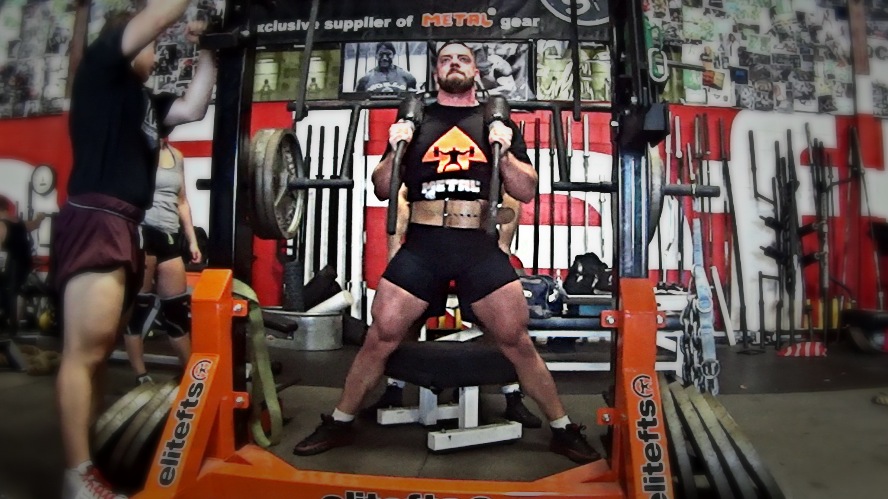
I just started a new wave of training, and am adding box squats in place of my normal deadlift rep day - this is something I've done a few times each year with good success. Personally, I've found that after 6-8 weeks of consistent deadlifting above a certain percentage, my progress plateaus more than the other lifts. The deadlift is a unique lift in many ways, and one of the big ones is how dependent your weekly performance is on being recovered and non-fatigued (something hard to maintain when you're pulling heavy every week).
I no longer do standard max effort work on a weekly basis, but I've always found dynamic effort squat work to benefit both my squat and my deadlift. Implementing it using specialty bars and as a box squat, has always built my deadlift (even when not pulling on a regular basis.)
There are a couple things that I personally think are important to get the most out of dynamic effort box squats in order to benefit your deadlift:
- Pause on the box - I'm personally not a fan of a big "rock" backwards on the box. But at the same time, a quick touch and go or bouncing off the box isn't what you want either. The best analogy I've heard on box squatting was from Dave Tate when he described it as "relaxing your hip flexors" before squatting up. Are you actually relaxing your hip flexors? No. But it's a good visualization to think about staying tight, but briefly unloading on the box before exploding up. Squatting from a paused position without momentum (especially from a parallel level box) can build great starting strength for the deadlift.
- Flex HARD off the box - One of the huge upsides to using a box is the ability to separate the concentric (up) and eccentric (down) parts of the squat. If you pause on the box, there's no rebound effect like when you squat normally. This also allows you to go from a static position (on the box) directly to flexing your glutes, quads, and hamstrings hard to explode upwards. Building this explosiveness will also help with starting strength for the deadlift.
- Use specialty bars if you have them - If you have access to specialty bars, I think they're a great way to mentally get away from your standard bar weight so you aren't focusing on what's on the bar. Bars like the SSB and Cambered Bar also provide extra emphasis on the back and hips which will help build your deadlift as well. These bars (especially the SSB) also provide a break for your shoulders and pecs.
- Depending on your situation, use briefs - Now... If you're a beginner lifter who competes raw, I don't think learning two different versions of the squat (one raw, one in briefs) is a good idea. But, if you are able to do some squatting in briefs without it throwing your technique off, it can be a great way to add in more squat volume without adding as much extra stress as raw squatting. This is all in how you implement it, however. If you add a max effort free squat day then obviously that's going to be extra stress on your body that you may not be able to recover from. But if you do box squatting focused on speed with lower percentages, the recovery time isn't as much as with a "regular" squat. If you aren't an equipped lifter, I also don't think you need to get briefs so tight you need 3 people to help you into them. For someone like me, who has torn hip labrums and is limited on how I can squat, a loose pair of briefs provides some extra support to add in a second squat day.
*Now all of this depends on the individual and what type of program you use, but this is how I implement box squats personally. I think they can be very beneficial, especially for building the deadlift.
For training questions, coaching, or feedback - You can always feel free to comment or email me at joeschillero@gmail.com / You can also visit PeakMentalPerformance.Org for information and podcasts on training, mental health, and coaching.








